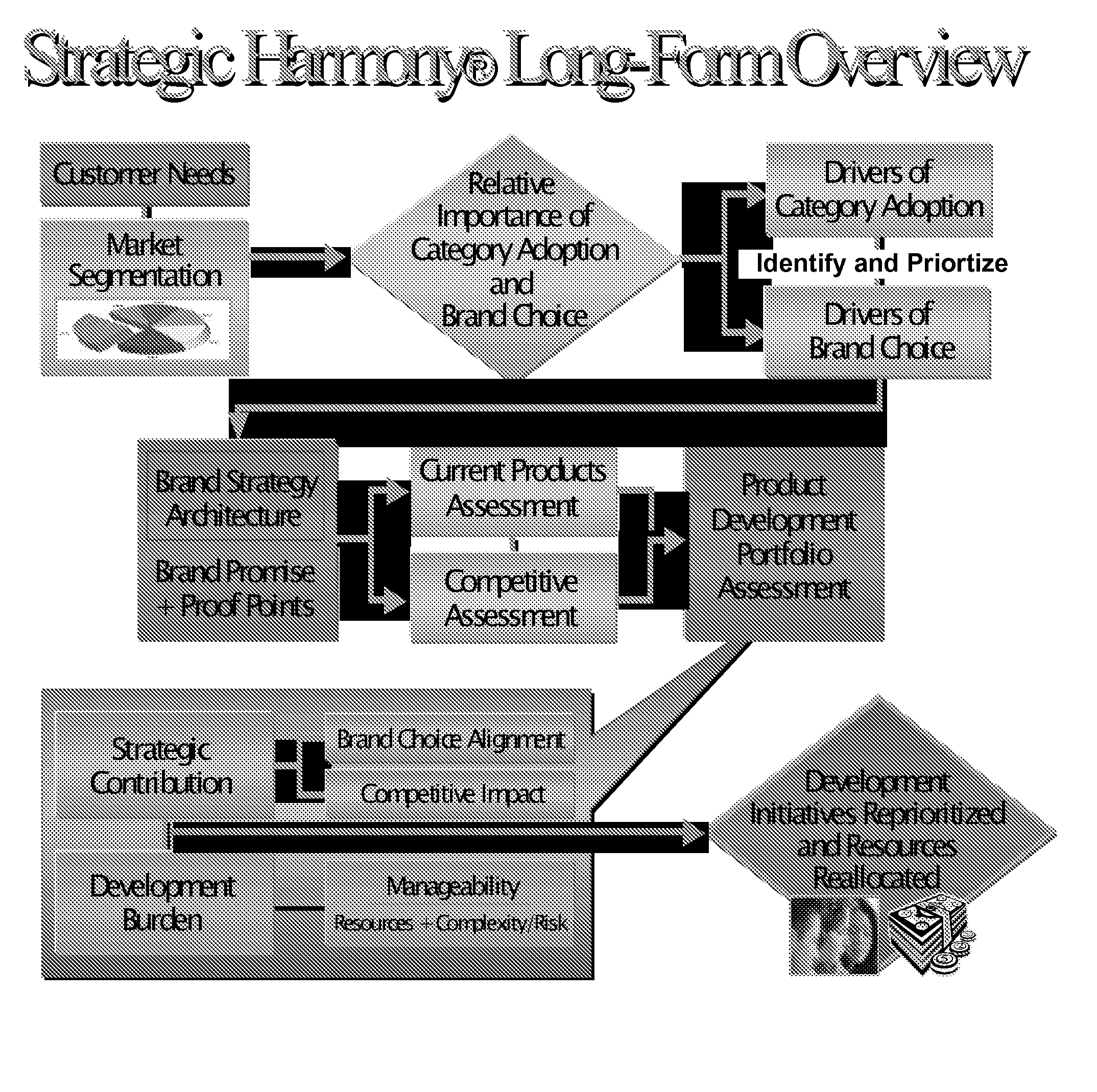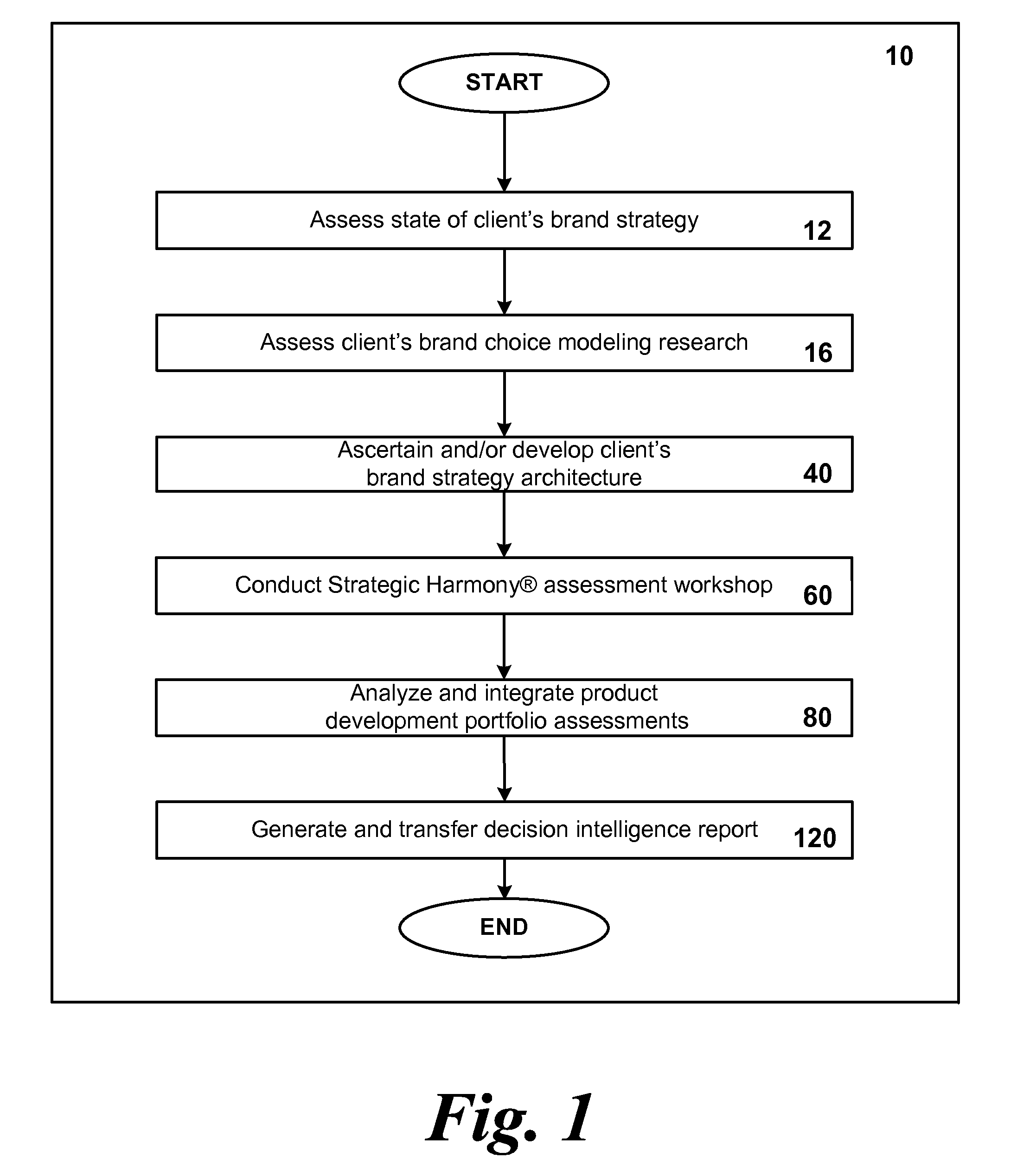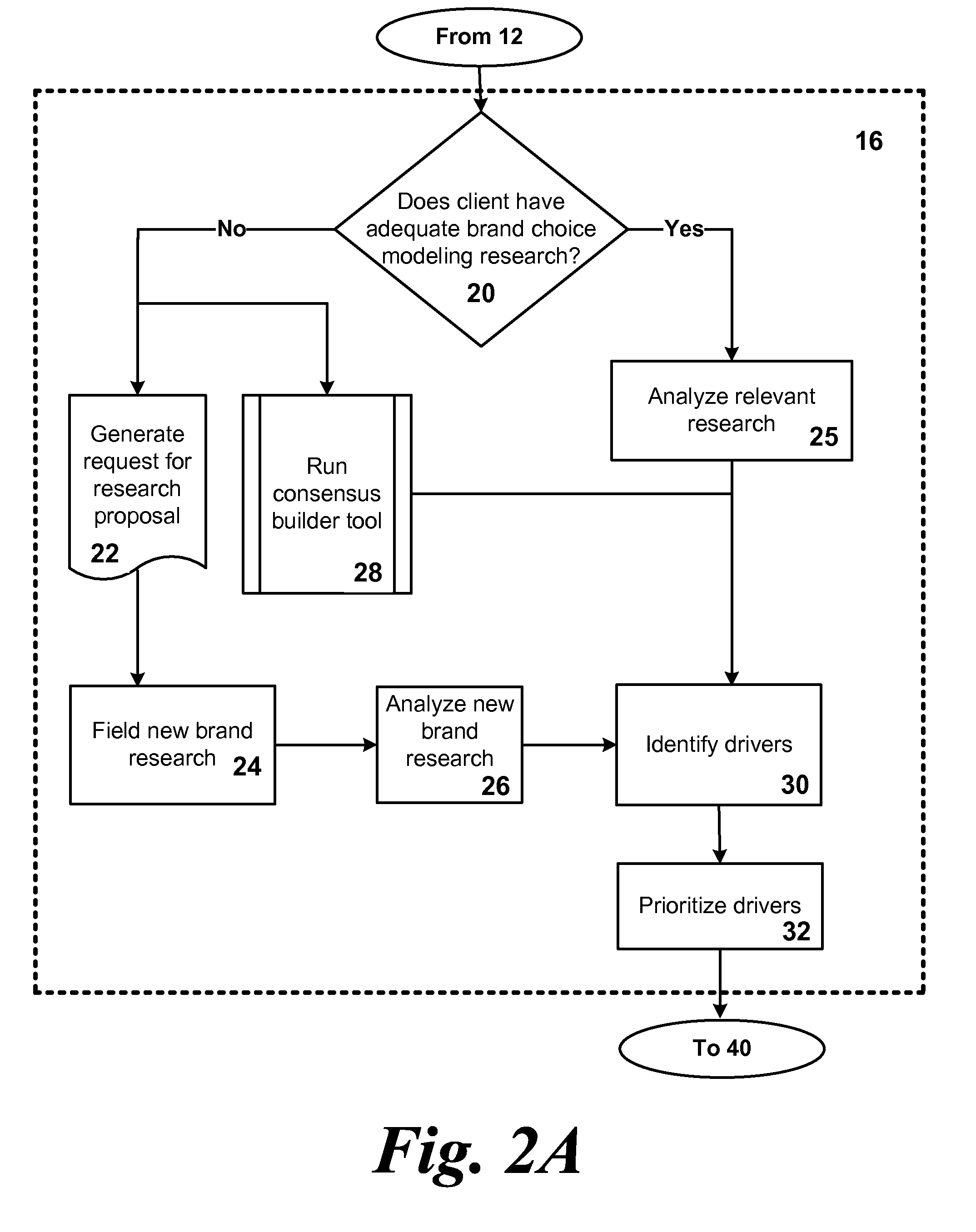System and method for optimizing product development portfolios and integrating product strategy with brand strategy
a product development and portfolio technology, applied in the field of system and method for optimizing product development portfolios and integrating product strategy with brand strategy, can solve the problems of large organizational, management and process changes that are expensive and time-consuming, and many companies are unable to coordinate these organizations in ways, so as to reduce time to market, improve business performance, and optimize product and/or service development portfolios cost-effectively
- Summary
- Abstract
- Description
- Claims
- Application Information
AI Technical Summary
Benefits of technology
Problems solved by technology
Method used
Image
Examples
first embodiment
[0015]FIG. 6 illustrates an example of a Brand Strategy Architecture in the first embodiment for an iMac® brand strategy;
[0016]FIG. 7 is an expansion of the Level 2 entity relationships of the iMac® Brand Strategy Architecture of FIG. 6;
[0017]FIG. 8 depicts a Strategic Harmony® example of Level 2 driver listings with identifiers and association factors similar to those described in FIGS. 6 and 7;
[0018]FIG. 9 depicts an expansion of another Strategic Harmony® example for prioritizing Level 2 drives of brand choice using the Application Consensus Builder tool in the case of applications related for use by a network IT manager;
[0019]FIG. 10 depicts a screenshot tabular illustration of examples of enterprise software having simplicity factor level association defined by numerical correlation coefficients as inputs to the Strategic Harmony® product development portfolio analysis;
[0020]FIG. 11 is a screenshot illustration from the first embodiment that shows how the output of the Consensu...
case # 3
[0097]Use Case #3 Flow of Events—1. User enters Project ID code; 2. User navigates to project home page and selects “Facilitator Support Center”—where sample workshop agendas, guidelines for timing and pacing, workshop team briefing presentations, and templates for workshop easel pads / whiteboards all reside. From here, user may also link to Facilitator Tutorials in the Reference Library (see “Alternative Paths” below). 3. User is presented with a facilitator support menu that offers four options: (1) Access workshop agenda builder (2) Access timing guidelines and pacing calculator (3) Access workshop briefing presentation builder. Workshop briefing presentations are not to be confused with the Strategic Harmony® presentation of results and recommendations, which is the focus of Use Case #9. Workshop briefing presentations, which are typically less elaborate, are used by the Consultant Facilitator in the workshop setting to orient the client company team for their effective participa...
case # 8
[0138]Use Case #8 Flow of Events—1. User enters Project ID code. 2. User navigates to project home page and selects “Integrate Assessments.” If Use Case #8 has already been completed in a previous visit, user may elect to view or print integrated assessment results and is presented with a menu of output displays from the previously completed Steps 3 through 7 below. If Use Case #8 was not completed previously, the Administering Consultant user is now taken to a page describing the six tasks that s / he may be asked to perform in Steps 3 through 7 below for assessment integration. These six tasks will most always be performed in the following sequence (though users may have flexibility to skip the first task and perform it at any point before task #5, as tasks #2-4 are not dependent on it): (1) Generate a single-page Assessments Recap (2) Generate Overall Strategic Importance Rankings (3) Create Application Priority Guide (4) Display Strategic Importance and Manageability side by side ...
PUM
 Login to View More
Login to View More Abstract
Description
Claims
Application Information
 Login to View More
Login to View More - R&D
- Intellectual Property
- Life Sciences
- Materials
- Tech Scout
- Unparalleled Data Quality
- Higher Quality Content
- 60% Fewer Hallucinations
Browse by: Latest US Patents, China's latest patents, Technical Efficacy Thesaurus, Application Domain, Technology Topic, Popular Technical Reports.
© 2025 PatSnap. All rights reserved.Legal|Privacy policy|Modern Slavery Act Transparency Statement|Sitemap|About US| Contact US: help@patsnap.com



